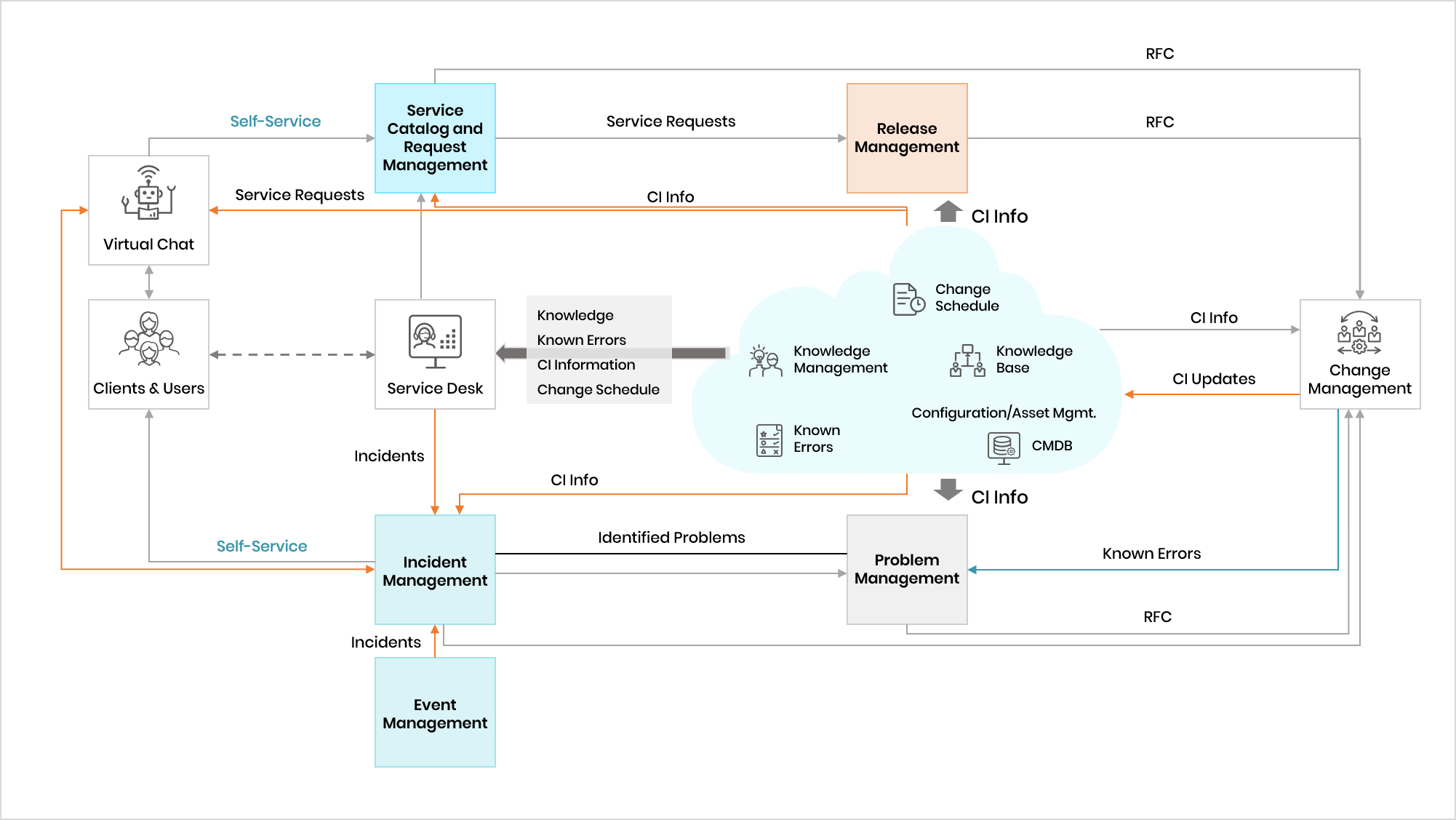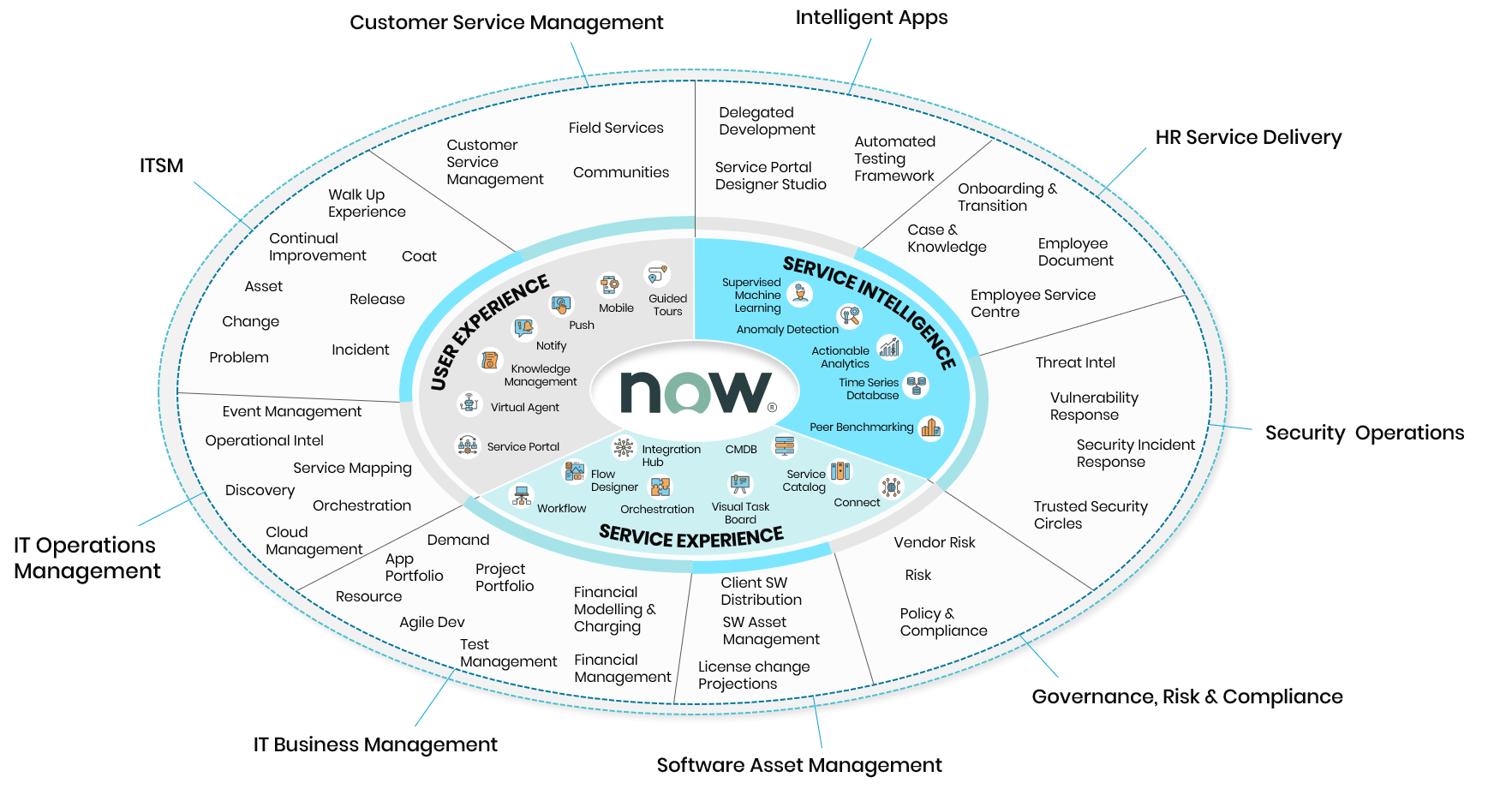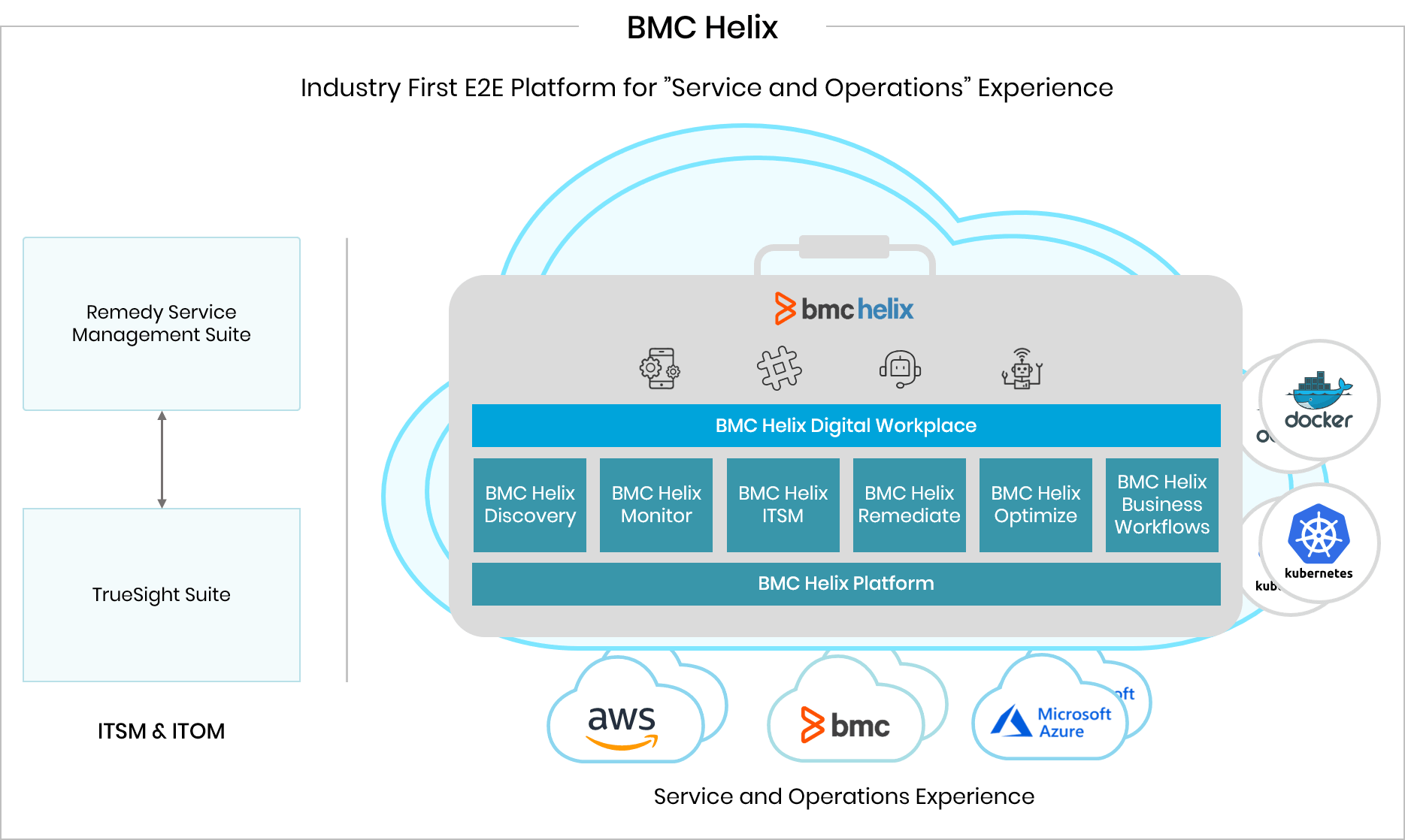Optimizing Employee Productivity and Customer Fulfillment
There is a major difference in the methods and processes companies choose to leverage information technologies. Many businesses’ IT departments have developed organically over time, with little ability to plan or strategize far into the future. Others developed a detailed, scalable plan from the beginning and continue to strategize to achieve the best possible return on their technology investments.
The difference between these two sides of the spectrum can be summarized in four letters: ITSM, or IT Service Management. If your organization’s digital path more closely resembles the former group, you have likely noticed:
Reduced productivity due to a lack of automation
Unplanned service outages
Delayed fulfillment time (including missed SLAs)
An overall poor customer experience
A modern ITSM approach offers significant benefits to your business by creating effective policies, processes, and procedures to support the various IT services used throughout the organization.
While the specific ITSM solutions are unique to each company, the right strategies focus on helping the business to quickly scale, adapt, modernize, and apply advanced technological solutions to meet the needs of both internal and external users, and customers. Such changes are made possible through strategic partnerships with ITSM vendors, following established best practices in your industry.













